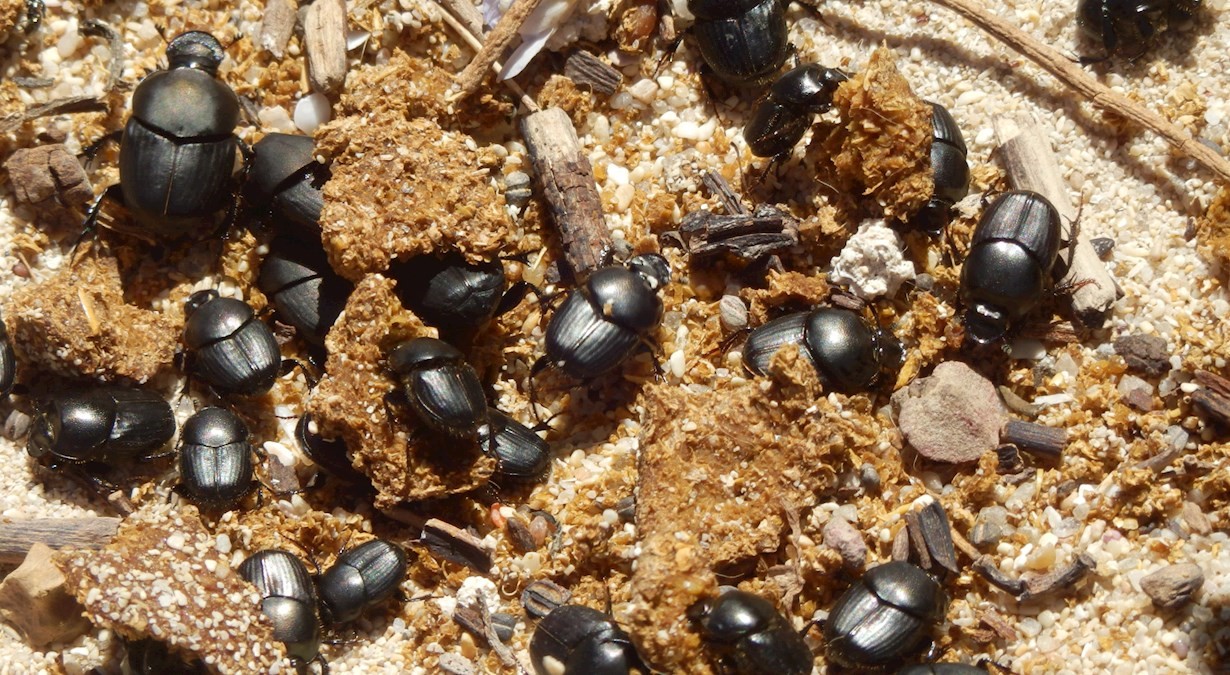Dung Beetles might be a welcome addition to your farm and the benefits of these industrious willing workers may surprise you.
Dung beetles break down animal waste and this addition of organic matter can support soil health.
Benefits can include:
- Control of flies and gut parasites in livestock
- Improved pasture production that could increase carrying capacity
- Reducing synthetic fertiliser requirements
- Improving soil water use efficiency
- Encouraging earthworms and carbon functionality
- Reducing methane gas emissions
If this sounds too good to be true, at present it may be, because trials of species are relatively limited in the Wheatbelt. Dung Beetles are also not currently easy to acquire and are costly.
There are more than 500 native species of dung beetle in Australia however these have limited use in agricultural settings as they are adapted to the faeces of native animals. Ten exotic species have been introduced into the South West.
Cattle and horse dung offer ideal conditions for the exotic beetles. Sheep and goat dung is also acceptable but the beetles tend to be less effective in summer when the dung forms dry pellets. Dung beetles seek out fresh, moist deposits.
Different species are active at different times of the year, use dung in different ways and are suited to different agri-ecological zones. The Department of Primary Industries, Research and Development are monitoring limited populations in the Wheatbelt. Wheatbelt NRM is currently working with researchers to investigate the further potential for our region.
If you’d like further information on getting involved with our sustainable agriculture work contact Wheatbelt NRM Regional Agriculture Landcare Facilitator Jacquie Lucas on 0427 934 112 or jlucas@wheatbeltnrm.org.au
More information about Dung Beetles is available at www.dungbeetles.com.au


